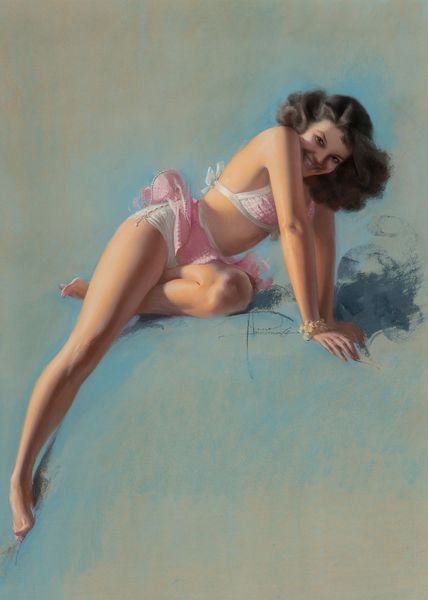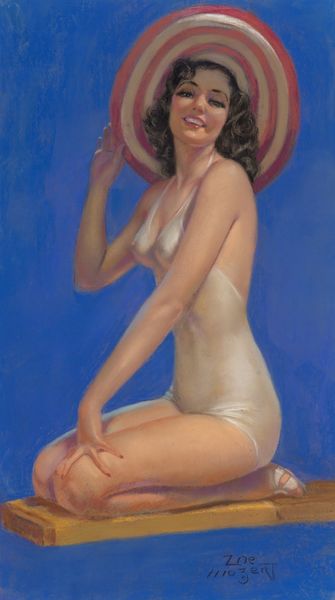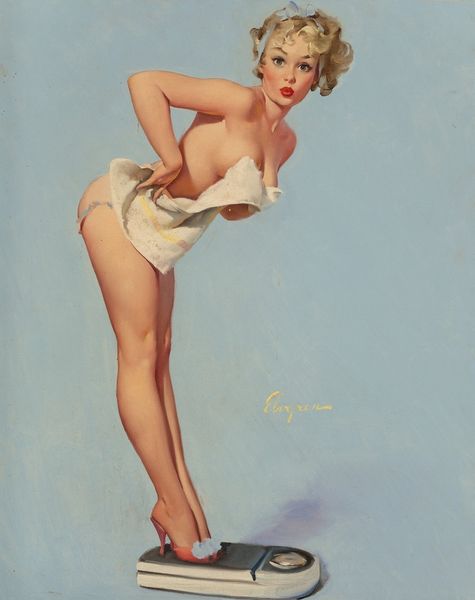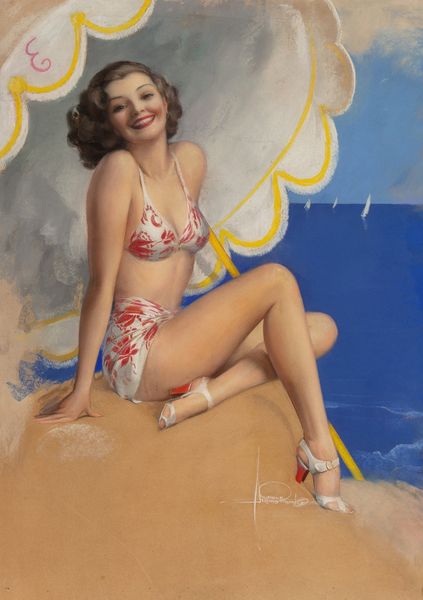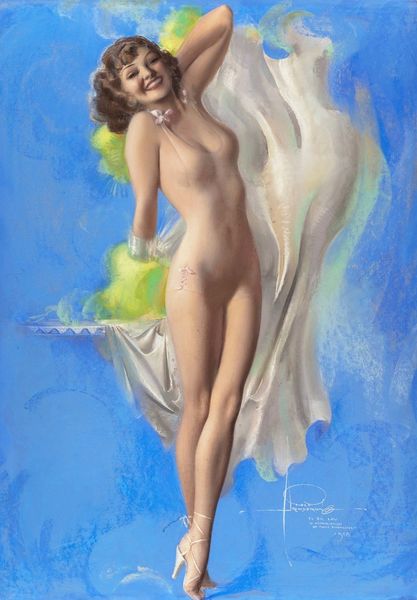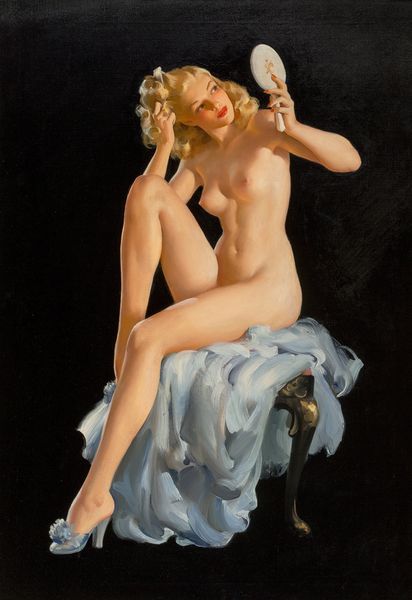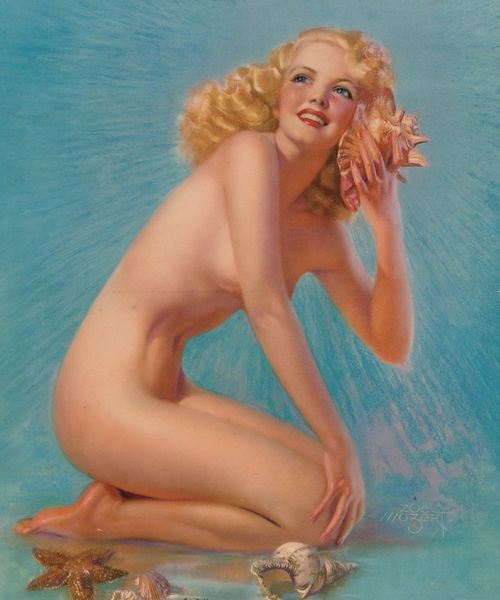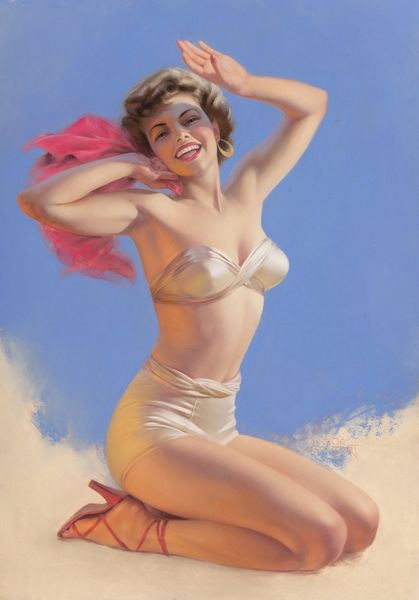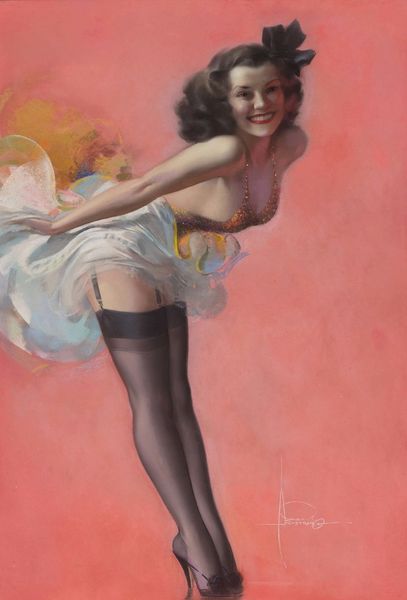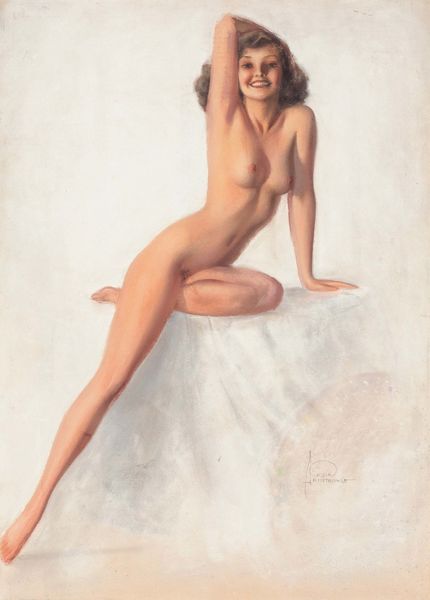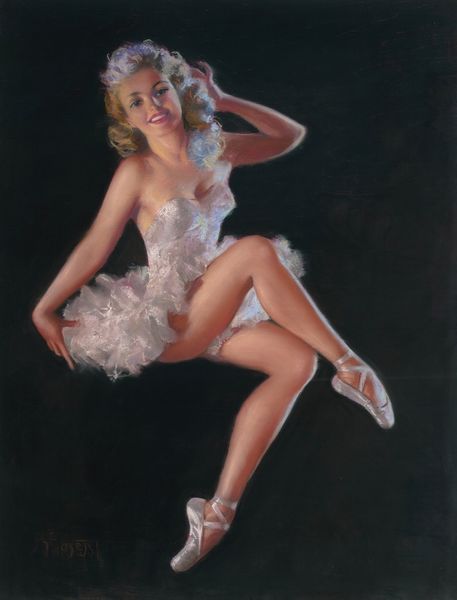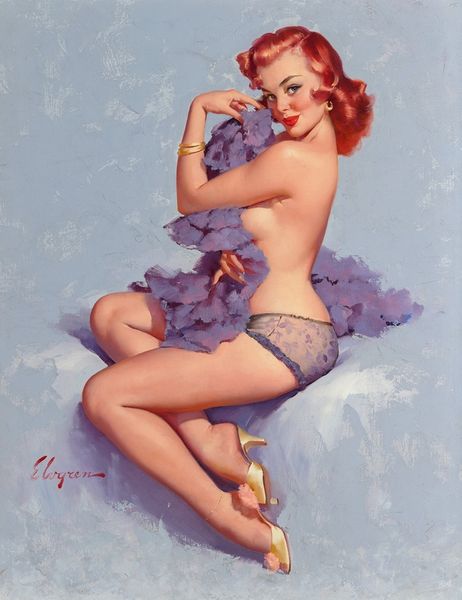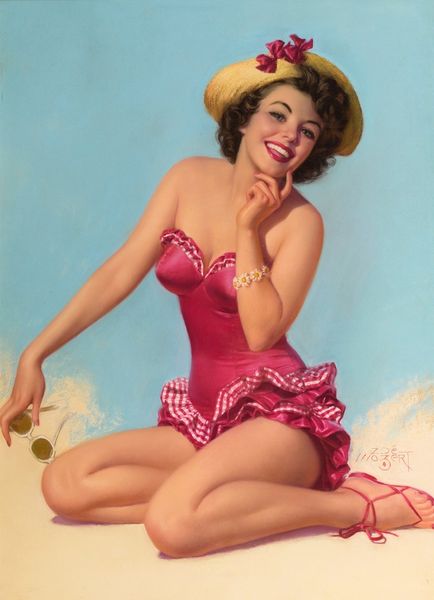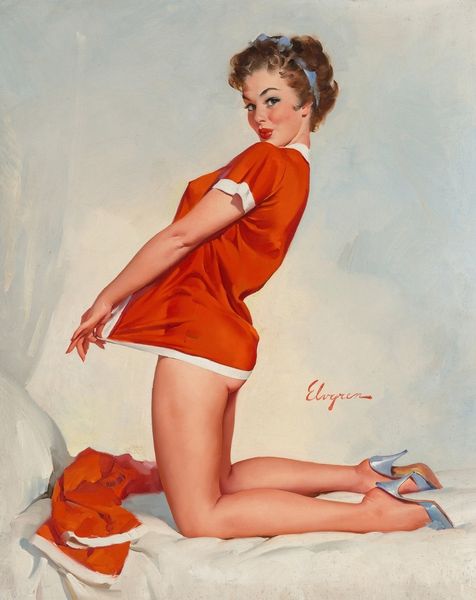
painting, oil-paint
#
portrait
#
painting
#
oil-paint
#
figuration
#
genre-painting
#
academic-art
#
modernism
#
erotic-art
Copyright: Modern Artists: Artvee
Curator: This is "Twinkle Toes," an oil painting crafted in 1947 by Rolf Armstrong. Armstrong was known for his pin-up art, often idealizing women for mass consumption. What are your initial impressions? Editor: It feels like a postcard from a dream! The impossibly blue background, the way she’s perched on… well, nothing visible, really. It’s both alluring and unsettling, like a beautifully wrapped secret. Curator: Indeed. Armstrong’s work existed within a nexus of commercial art, mass media, and evolving social constructs of femininity. These images weren’t just art, they were cultural currency. They sold everything from magazines to war bonds. Editor: It’s fascinating how he blends this almost saccharine sweetness with a palpable sensuality. It's all soft edges and a coy smile. What do you make of the hint of eroticism inherent in her gesture, the wet foot? Is she bathing, dancing, or is this strictly for our enjoyment? Curator: Those visual cues are very deliberate. Consider the gaze, direct yet seemingly innocent. The "wet foot," while suggestive, can be seen as symbolizing purity, rebirth, a sort of modern Venus arising from the sea. The painting flirts with desire, but never fully commits, ensuring its widespread appeal within the moral parameters of the time. Editor: Do you think Armstrong considered the power dynamics inherent in portraying women this way? Did he ever grapple with how his art may be interpreted? It all seems rather effortless, and yet, these images were incredibly influential in shaping popular beauty ideals. Curator: That's the key tension. While Armstrong likely operated within the prevailing norms of his time, without the full benefit of our contemporary critical frameworks, his work became enmeshed in evolving dialogues concerning gender and representation. How we engage with his work today becomes, therefore, not just about artistic appreciation, but ethical evaluation. Editor: Exactly. Looking at "Twinkle Toes," I feel both a sense of admiration for the skill and a nagging discomfort with the underlying context. But that tension is where the conversation begins, isn't it? The dream dissolves a bit, but something more substantial takes its place. Curator: Absolutely. It pushes us to interrogate not just the image itself, but also our own perspectives and how they’re informed by our historical moment. Art doesn't exist in a vacuum, after all. Editor: Thanks for unraveling the nuances here today. It definitely changes the way I look at her and all the "Twinkle Toes" in the world.
Comments
No comments
Be the first to comment and join the conversation on the ultimate creative platform.
